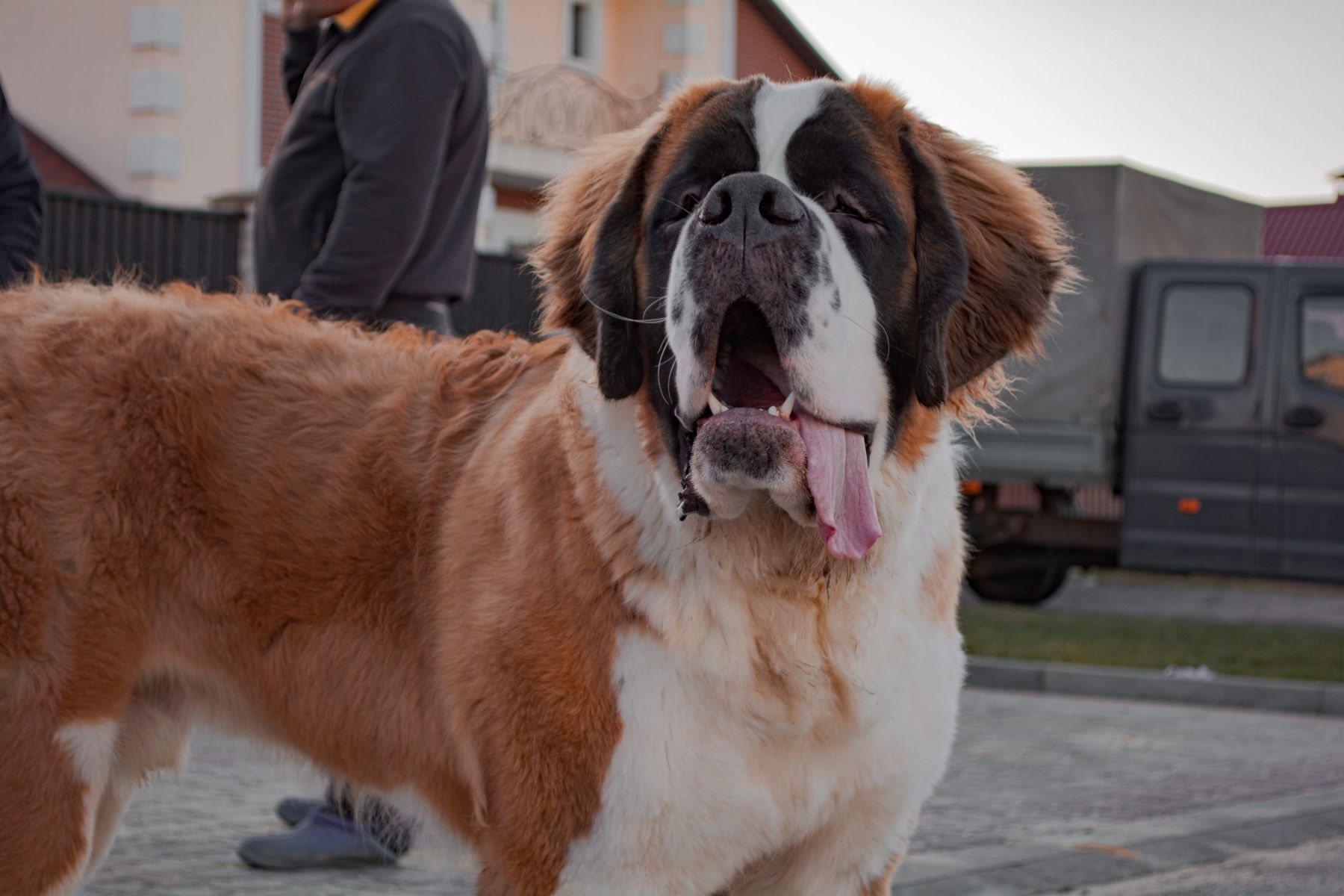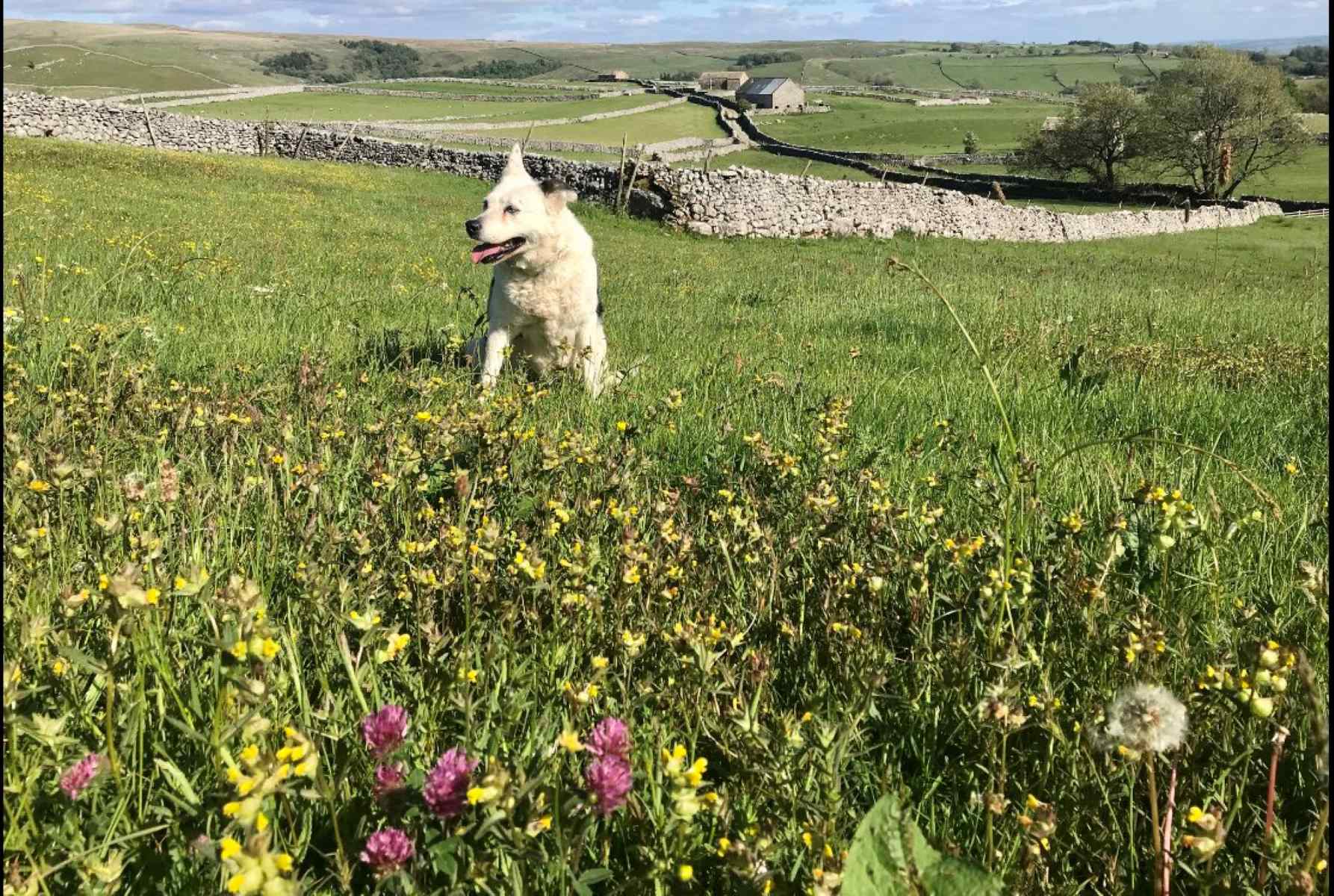Home>Pets & Animals>Discover The Surprising Contrasts Between Bernese Mountain Dogs And Saint Bernards!


Pets & Animals
Discover The Surprising Contrasts Between Bernese Mountain Dogs And Saint Bernards!
Published: January 17, 2024
Discover the key differences and similarities between Bernese Mountain Dogs and Saint Bernards. Find out which breed is the ideal fit for your family and lifestyle. Learn more about these beloved pets and animals today!
(Many of the links in this article redirect to a specific reviewed product. Your purchase of these products through affiliate links helps to generate commission for Regretless.com, at no extra cost. Learn more)
Table of Contents
Origins and History
The origins and history of Bernese Mountain Dogs and Saint Bernards are steeped in rich heritage and fascinating tales. These breeds have captivated the hearts of dog lovers for centuries, and their stories are as intriguing as they are enduring.
Bernese Mountain Dogs:
The Bernese Mountain Dog, hailing from the Swiss Alps, has a history that dates back over 2,000 years. These majestic canines were initially bred as versatile working dogs by Swiss farmers. Their primary roles included herding cattle, pulling carts, and standing guard over the farmstead. The breed's name, "Bernese," is derived from the Berne region in Switzerland, where they were particularly prevalent.
Saint Bernards:
In contrast, the Saint Bernard's history is shrouded in the mystique of the Swiss Alps, where they were initially bred by monks at the Saint Bernard Hospice. These noble dogs were revered for their remarkable abilities in rescuing stranded travelers amidst treacherous snowstorms. The Saint Bernard's legendary status as a rescue dog has solidified its place in history and popular culture.
Both breeds share a common thread in their historical roles as working dogs in the Alpine region, showcasing their unwavering loyalty, strength, and resilience in the face of challenging terrains and harsh climates. These attributes continue to define their enduring appeal and endear them to dog enthusiasts worldwide.
Physical Characteristics
When it comes to physical characteristics, Bernese Mountain Dogs and Saint Bernards exhibit striking differences and unique traits that set them apart. Let's delve into the distinct features that define these majestic breeds.
Bernese Mountain Dogs:
- Size: Bernese Mountain Dogs are robust and powerful, with a sturdy build that exudes strength and agility. They typically stand between 23 to 27.5 inches at the shoulder, presenting a commanding presence.
- Coat: One of the most distinctive features of the Bernese Mountain Dog is its luxurious tri-colored coat. The combination of jet black, clear white, and rich rust hues forms a dazzling tapestry that adorns their majestic frame.
- Expression: Their gentle, soulful eyes and endearing facial expressions reflect their amiable nature, capturing the hearts of all who encounter them.
- Musculature: These dogs boast a well-proportioned, muscular physique, with a broad chest and strong, sturdy legs that enable them to navigate rugged terrain with grace and poise.
Saint Bernards:
- Size: Saint Bernards are renowned for their imposing size, often towering between 25 to 30 inches at the shoulder. Their sheer magnitude commands attention and conveys a sense of noble grandeur.
- Coat: The Saint Bernard's coat is a marvel to behold, characterized by its dense, smooth, and water-resistant double layer. Their coat comes in various color combinations, including striking shades of red, mahogany, and white, creating a visually stunning ensemble.
- Expression: Their expressive, kind eyes exude warmth and compassion, reflecting their gentle and nurturing disposition.
- Musculature: Despite their massive build, Saint Bernards possess a graceful and well-balanced physique, exuding an aura of strength and solidity.
In essence, Bernese Mountain Dogs and Saint Bernards are distinguished by their impressive stature, captivating coat patterns, and endearing facial expressions. These physical characteristics not only contribute to their visual allure but also encapsulate their unique personalities and unwavering loyalty. Whether it's the majestic tri-colored coat of the Bernese Mountain Dog or the imposing presence of the Saint Bernard, these breeds embody a harmonious blend of strength, elegance, and charm.
Temperament and Personality
Bernese Mountain Dogs and Saint Bernards possess distinct temperaments and personalities that endear them to families and individuals seeking loyal and affectionate companions. Understanding the nuances of their dispositions is crucial in determining which breed aligns with your lifestyle and preferences.
Bernese Mountain Dogs:
Renowned for their gentle and affectionate nature, Bernese Mountain Dogs exude warmth and amiability in every interaction. Their inherently sweet disposition makes them exceptional family pets, displaying unwavering loyalty and devotion to their human companions. These dogs thrive on companionship and are known for their nurturing demeanor, often assuming a protective role within the family dynamic. Their calm and composed nature, coupled with a natural inclination towards children, positions them as ideal playmates and guardians for youngsters.
Moreover, Bernese Mountain Dogs exhibit a keen intelligence and eagerness to please, making them receptive to training and responsive to positive reinforcement. Their affable nature extends to their interactions with other pets, as they tend to foster harmonious relationships within multi-pet households. While they are generally laid-back, they possess a playful streak that adds a delightful charm to their personality, making them wonderful companions for outdoor activities and leisurely strolls.
Saint Bernards:
Saint Bernards are celebrated for their gentle giants' reputation, characterized by their affectionate and nurturing demeanor. Their innate patience and benevolence make them exceptional companions, particularly in households with children. Their calm and composed nature is complemented by a natural instinct to protect and comfort, earning them the moniker of "nanny dogs" due to their attentive and watchful presence around young family members.
Furthermore, Saint Bernards exhibit remarkable adaptability and adapt well to various living environments, showcasing an easygoing and genial disposition that fosters a harmonious coexistence with family members and other pets. Their affable nature is underscored by an inherent fondness for human interaction, often seeking closeness and affection from their loved ones.
In essence, Bernese Mountain Dogs and Saint Bernards embody affable and nurturing personalities, characterized by unwavering loyalty, gentle demeanor, and a natural inclination towards compassion and companionship. Whether it's the endearing warmth of the Bernese Mountain Dog or the nurturing presence of the Saint Bernard, these breeds epitomize the quintessential traits of devoted and loving companions, enriching the lives of those fortunate enough to welcome them into their homes.
Exercise and Training Needs
Ensuring the physical and mental well-being of Bernese Mountain Dogs and Saint Bernards hinges on a comprehensive understanding of their exercise and training requirements. These aspects play a pivotal role in nurturing a harmonious and fulfilling relationship with these remarkable breeds.
Bernese Mountain Dogs:
Bernese Mountain Dogs thrive on regular exercise that caters to their robust physique and innate vitality. Engaging in moderate to vigorous activities such as brisk walks, hiking, and interactive play sessions not only fulfills their exercise needs but also strengthens the bond between the dog and its human companions. These activities provide an avenue for the breed to expend their energy and maintain optimal physical health.
In terms of training, Bernese Mountain Dogs exhibit a predisposition towards learning and responding to positive reinforcement. Consistency, patience, and gentle guidance are integral in their training regimen. Obedience training and socialization from an early age are essential to instill good behavior and ensure that they interact harmoniously with other pets and individuals. Their eager-to-please nature and intelligence make them receptive to training, allowing for the cultivation of desirable behaviors and manners.
Saint Bernards:
Saint Bernards, despite their imposing size, have moderate exercise requirements. Regular walks and low-impact activities are beneficial for maintaining their overall well-being. Given their gentle disposition, they also enjoy interactive play sessions and mental stimulation exercises, which contribute to their mental acuity and emotional fulfillment.
Training Saint Bernards necessitates a calm and consistent approach, considering their sensitive nature. Positive reinforcement techniques, coupled with patience and encouragement, yield favorable results in their training journey. Early socialization and obedience training are imperative to nurture their gentle and amiable demeanor, ensuring that they become well-mannered and sociable companions.
In essence, understanding the exercise and training needs of Bernese Mountain Dogs and Saint Bernards is integral to fostering a balanced and enriching lifestyle for these beloved breeds. By catering to their physical and mental requirements with tailored activities and positive training methods, owners can cultivate a strong and enduring bond with their canine companions while nurturing their overall well-being.
Grooming and Care
Grooming and care are pivotal components of responsible pet ownership, particularly when it comes to the distinct needs of Bernese Mountain Dogs and Saint Bernards. These breeds possess unique coat characteristics and grooming requirements that necessitate attentive maintenance and nurturing care to ensure their well-being and overall health.
Bernese Mountain Dogs:
The Bernese Mountain Dog's stunning tri-colored coat, characterized by its long, silky fur, demands regular grooming to preserve its lustrous appearance and prevent matting. Brushing their coat several times a week is essential to manage shedding and minimize the accumulation of loose fur. Additionally, during seasonal shedding periods, more frequent brushing is recommended to maintain coat health and minimize the presence of loose hair around the home.
Bathing should be undertaken as needed, using a gentle dog shampoo to cleanse their coat without stripping its natural oils. Careful attention should be paid to drying their thick fur thoroughly to prevent skin irritation and the development of moisture-related skin conditions.
Furthermore, regular maintenance of their ears, teeth, and nails is imperative. Cleaning their ears to prevent wax buildup, brushing their teeth to uphold dental hygiene, and trimming their nails to a suitable length are integral aspects of their grooming regimen.
Saint Bernards:
Saint Bernards boast a dense, water-resistant double coat that necessitates regular grooming to manage shedding and maintain coat health. Brushing their coat several times a week aids in preventing tangles and matting, contributing to the preservation of their coat's natural luster and texture.
Similar to Bernese Mountain Dogs, bathing should be conducted as needed, utilizing a mild dog shampoo to cleanse their coat without compromising its natural oils. Thorough drying after bathing is crucial to prevent skin issues and maintain coat cleanliness.
In addition to coat care, attention to ear cleaning, dental hygiene, and nail trimming is essential for the overall well-being of Saint Bernards. Regular inspection of their ears, coupled with gentle cleaning, helps prevent infections. Consistent dental care, including brushing their teeth, contributes to their oral health, while routine nail trimming ensures their comfort and mobility.
In essence, grooming and care play a pivotal role in preserving the health and well-being of Bernese Mountain Dogs and Saint Bernards. By adhering to a consistent grooming routine and providing attentive care, owners can ensure that their beloved companions maintain healthy coat conditions, optimal hygiene, and overall wellness.
Health Concerns
Both Bernese Mountain Dogs and Saint Bernards are beloved for their remarkable qualities, yet they are susceptible to certain health concerns that necessitate vigilant monitoring and proactive care. Understanding these potential health issues is crucial for providing comprehensive support and ensuring the well-being of these cherished breeds.
Bernese Mountain Dogs:
-
Cancer: Bernese Mountain Dogs are unfortunately predisposed to various forms of cancer, including mast cell tumors, lymphoma, and osteosarcoma. Regular veterinary check-ups and early detection are imperative in managing and addressing potential cancer-related concerns.
-
Hip and Elbow Dysplasia: This hereditary condition can affect Bernese Mountain Dogs, leading to discomfort and mobility issues. Implementing a balanced diet, regular exercise, and weight management is essential in mitigating the impact of hip and elbow dysplasia.
-
Gastric Torsion (Bloat): Bernese Mountain Dogs are susceptible to gastric torsion, a serious condition characterized by the stomach twisting, leading to potential life-threatening consequences. Monitoring their feeding habits, avoiding vigorous exercise after meals, and discussing preventive measures with a veterinarian are crucial in minimizing the risk of bloat.
-
Hypothyroidism: This endocrine disorder can manifest in Bernese Mountain Dogs, impacting their metabolism and overall well-being. Regular thyroid screenings and adherence to prescribed medications, if necessary, are integral in managing hypothyroidism and maintaining their health.
Saint Bernards:
-
Giant Breed Health Concerns: As a giant breed, Saint Bernards are prone to specific health issues associated with their size, including joint problems, such as hip dysplasia and elbow dysplasia. Providing a supportive and cushioned environment, along with controlled exercise, is vital in managing these concerns.
-
Cardiac Conditions: Saint Bernards may be susceptible to cardiac issues, such as dilated cardiomyopathy, necessitating regular cardiac evaluations and monitoring to address potential cardiac concerns.
-
Orthopedic Challenges: Given their substantial size, Saint Bernards are at risk of orthopedic conditions, including osteochondritis dissecans (OCD) and panosteitis. Providing a balanced diet, low-impact exercise, and regular veterinary assessments are essential in managing and mitigating orthopedic challenges.
-
Ectropion and Entropion: These eye conditions, characterized by eyelid malformations, can affect Saint Bernards, potentially leading to discomfort and vision impairment. Monitoring their eye health and seeking prompt veterinary attention for any ocular abnormalities is crucial in addressing these concerns.
By proactively addressing these potential health concerns through regular veterinary care, balanced nutrition, and attentive monitoring, owners can provide comprehensive support to ensure the well-being and longevity of their cherished Bernese Mountain Dogs and Saint Bernards.
Choosing the Right Breed for You
When contemplating adding a Bernese Mountain Dog or a Saint Bernard to your family, it's essential to consider various factors to determine which breed aligns with your lifestyle, preferences, and capabilities. Both breeds possess distinctive traits, and understanding these nuances is pivotal in making an informed decision that fosters a harmonious and fulfilling relationship.
If you prioritize a loyal and affectionate companion with a gentle and nurturing disposition, the Bernese Mountain Dog may be an ideal match for you. Renowned for their unwavering loyalty and affectionate nature, these dogs thrive on companionship and are exceptionally well-suited for families seeking a devoted and protective pet. Their adaptability to various living environments, coupled with their gentle demeanor, positions them as versatile and loving companions.
On the other hand, if you are drawn to a gentle giant with a nurturing and amiable disposition, the Saint Bernard may be the perfect fit for your household. Their patient and benevolent nature, complemented by a natural instinct to protect and comfort, makes them exceptional companions, particularly in households with children. Their adaptability and genial disposition foster a harmonious coexistence with family members and other pets, embodying the quintessential traits of devoted and loving companions.
Consideration of the breeds' exercise and grooming needs is also crucial in aligning with your lifestyle. Bernese Mountain Dogs thrive on regular exercise and require attentive grooming to maintain their stunning coat, while Saint Bernards have moderate exercise requirements and necessitate regular coat care to manage shedding and preserve coat health.
Furthermore, the potential health concerns associated with each breed should be carefully weighed. Bernese Mountain Dogs are susceptible to conditions such as cancer, hip and elbow dysplasia, gastric torsion, and hypothyroidism, while Saint Bernards may face health issues related to their size, including joint problems and cardiac conditions.
By thoroughly assessing your living environment, activity level, grooming capabilities, and willingness to address potential health concerns, you can make an informed decision that aligns with your capacity to provide a loving and nurturing home for a Bernese Mountain Dog or a Saint Bernard. Ultimately, choosing the right breed entails a thoughtful consideration of their unique traits, your lifestyle, and your commitment to providing a loving and supportive environment for your future canine companion.












